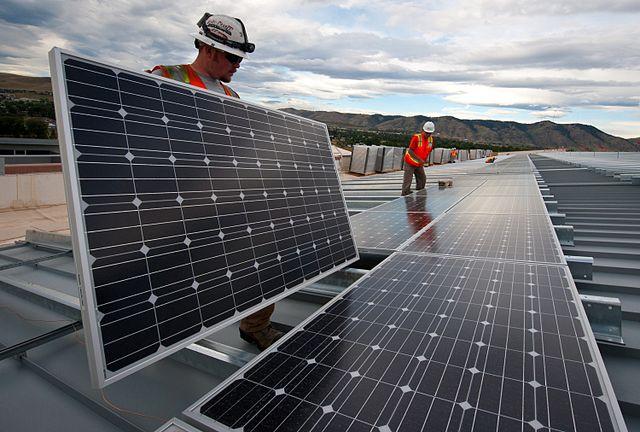
One common criticism of solar does, unfortunately, have merit: Thus far, rooftop solar incentives have gone mostly to well-off homeowners in major cities, leaving Americans in remote regions, and the poor, out of the mix.
Now, the White House is trying to change that with a new work-development program and the revival of a grassroots solar program, both aimed at broadening the solar revolution.
American solar is typically concentrated in a few places with favorable policies – such as California – or in certain communities where people are wealthy enough to afford solar panels with high upfront costs. The stigma that solar is an energy of the rich, sadly, is true, as studies show that well-off homeowners are the ones putting panels on their rooftops. Alternative methods for expanding solar energy, such as community solar, have, so far, yet to take off.
What this shows is that, despite this growth, there is a lot more we can do to expand solar. President Barack Obama -- who during his 7.5 years as the nation's chief executive saw solar electricity generation grow by an astounding 3,000 percent -- is pushing for clean energy to be one of his lasting legacies. That is why his administration is out to not only expand solar access, but also bring solar jobs to more Americans.
Launched earlier this month, the president's Clean Energy Savings for All initiative is actually a rebirth of a program initially launched in 2007 and shelved a year later due to the financial crisis. Essentially, it allows families of any means to gain access to a government-backed mortgage to buy homes with solar panels already in place. It is aimed specifically at the low- and moderate-income Americans that still have limited access to solar energy.
“We applaud the administration for its continued commitment to expanding access to clean, affordable, reliable electricity,” said Tom Kimbis, interim president of the Solar Energy Industries Association, in a press statement. “From rural America to our nation’s inner cities, everyone deserves the chance to participate in the solar revolution.”
Alongside this came, days later, an announcement that the White House will work with the Solar Foundation on a huge workforce-development program. This ensures that the boom in solar jobs also empowers low-income communities, ideally building a virtuous cycle of economic growth.
“As the number of solar jobs increases dramatically each year, the Solar Training Network will help give job seekers the training opportunities they need, while helping employers gain access to qualified candidates,” said Andrea Luecke, president and executive director of the Solar Foundation, in a press statement. The partnership, entitled the Solar Training Network, aims to train 75,000 people for careers in solar in the next 3.5 years – an ambitious goal, but one that is necessary for us to truly scale up solar.
Both programs show that the current administration is serious about ensuring the United States fulfills its commitments as part of the Paris Agreement, agreed to late last year. However, it will be up to the next president to continue Obama's second-term moves. And, from what we heard at the Democratic and Republican Conventions these past few weeks, it is obvious that only one party's nominee is ready to lead on climate and solar.
Image credit: Department of Energy via Wikimedia Commons (public domain)

Nithin Coca is a freelance journalist who focuses on environmental, social, and economic issues around the world, with specific expertise in Southeast Asia.














